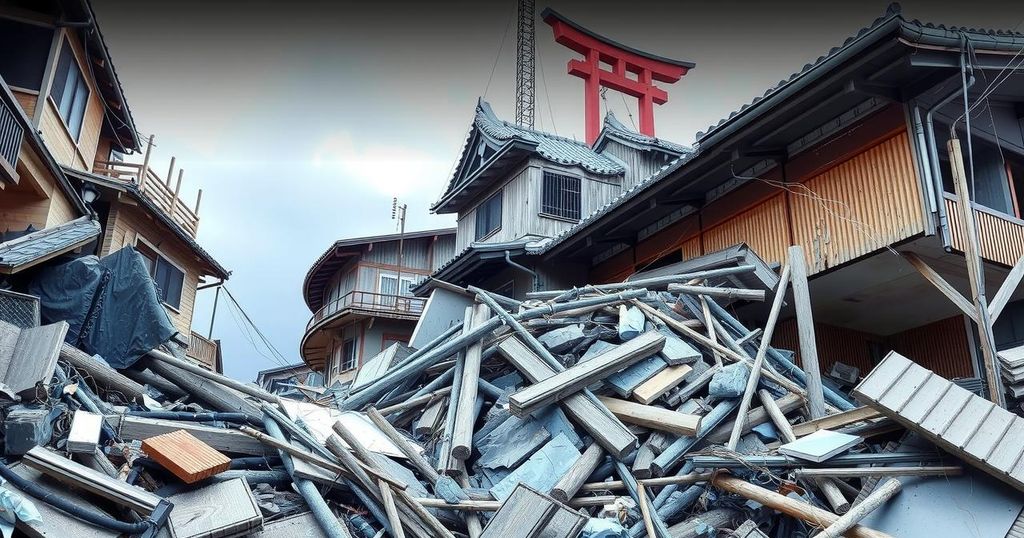The 2011 Japan Earthquake and Tsunami: Aftermath and Recovery

The 2011 Tōhoku earthquake and tsunami caused significant devastation and loss, with initial death tolls exceeding 10,000. By the end of 2011, the confirmed deaths were approximately 19,300. The disaster significantly impacted coastal areas, with many fatalities resulting from drowning, particularly among the elderly. Additionally, a major nuclear crisis at Fukushima Daiichi power plant arose due to the tsunami, leading to a level 7 nuclear emergency and long-term radiation concerns.
The aftermath of the 2011 Tōhoku earthquake and tsunami was marked by unprecedented loss and devastation. Initial reports indicated hundreds of casualties, but as rescue operations began and the full extent of the destruction became visible, the death toll quickly surpassed 10,000, with many still unaccounted for. Within weeks, confirmed deaths estimated at approximately 28,500 began to decrease as missing persons were discovered alive, leading to a revised number of around 19,300 by the end of 2011. Affected areas, particularly in Miyagi prefecture, experienced severe population losses, exacerbated by the tsunami’s devastating impact on coastal cities, towns, and farmlands. Almost all fatalities resulted from drowning, and more than half of the victims were individuals aged 65 and over. The earthquake caused significant damage across a broad area, with notable fires breaking out due to infrastructure failures, particularly in Sendai and other cities. Thousands of homes were either completely or partially destroyed, and critical infrastructure, such as roads, railways, and power supplies, sustained extensive damage. Following the disaster, a severe nuclear crisis unfolded at the Fukushima Daiichi Nuclear Power Plant. While the reactors automatically shut down post-earthquake, the tsunami severely compromised their backup cooling systems. This loss of cooling resulted in overheating and partial meltdowns of three reactor cores, leading to catastrophic radiation leaks. As a precautionary measure, an evacuation zone was established, with warnings issued regarding the consumption of contaminated food and water. Japan’s nuclear regulators subsequently elevated the incident’s severity to level 7, categorizing it alongside the Chernobyl disaster. Although radiation levels eventually dropped, concerns persisted about the long-term safety of the affected regions. By December 2011, officials declared the nuclear facility stable, yet the long-term ramifications of the disaster continue to resonate, particularly regarding environmental safety and community recovery efforts.
In March 2011, Japan endured a catastrophic earthquake and resultant tsunami, causing staggering loss of life and widespread destruction, particularly along the Pacific coastline. This disaster not only impacted human lives but significantly disrupted infrastructure, economies, and environmental safety protocols, including a nuclear incident at the Fukushima Daiichi plant. The event is regarded as one of the deadliest natural disasters in Japan’s recorded history. The response to this calamity encompassed extensive search and rescue operations, alongside the assessment and management of the nuclear crisis that unfolded at Fukushima.
The 2011 Tōhoku earthquake and tsunami resulted in one of the most devastating natural disasters in Japan, leading to a significant loss of life and substantial property damage. The aftermath necessitated extensive recovery efforts, particularly in coastal regions and among the elderly population, who represented a large portion of the victims. The concurrent nuclear crisis at Fukushima compounded the disaster’s effects, leading to long-term concerns about radiation exposure and environmental safety. Recovery efforts are ongoing, with lessons from this tragedy shaping future preparedness and response strategies in Japan and around the world.
Original Source: www.britannica.com







